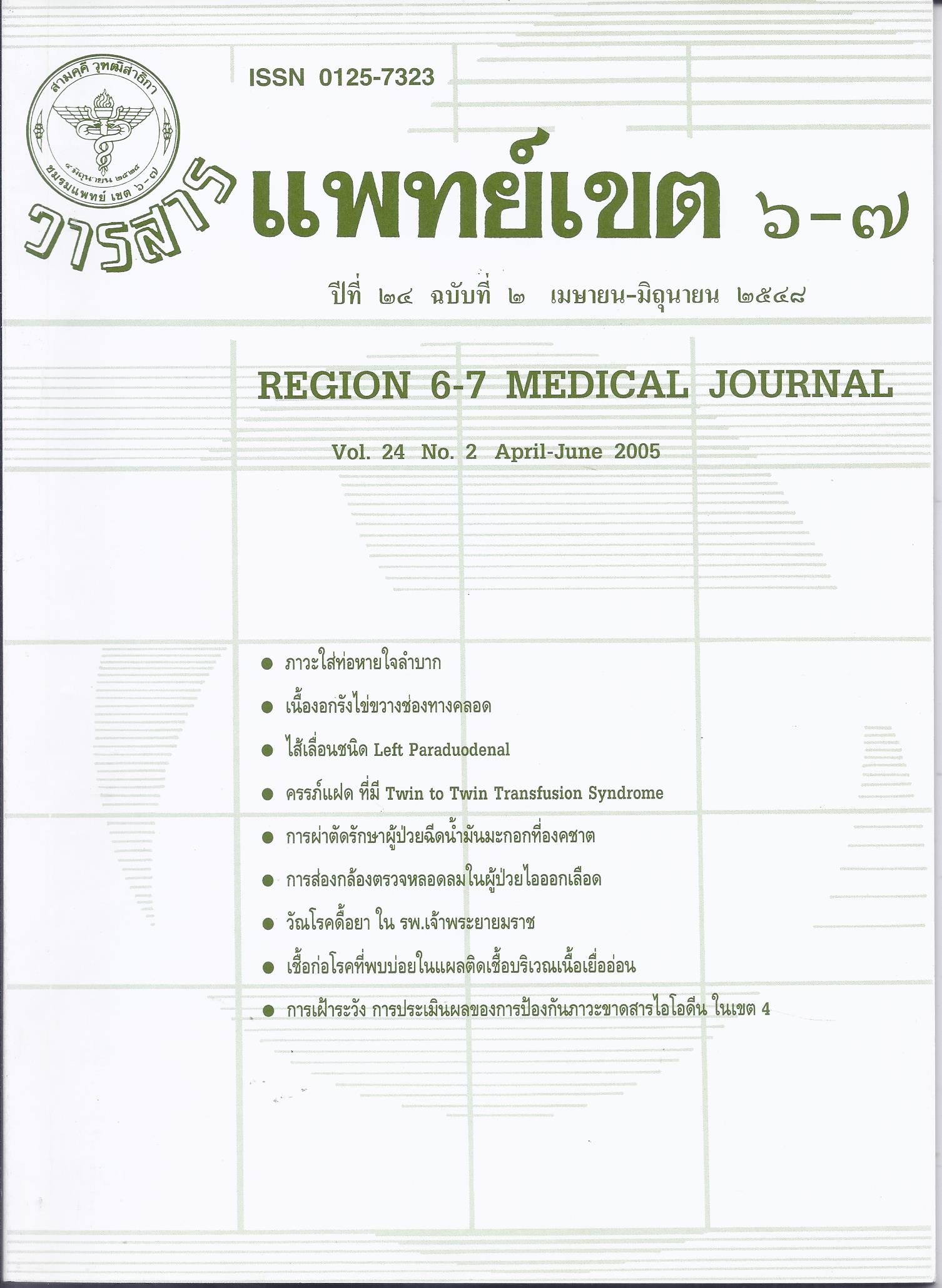ระบบการเฝ้าระวัง และประเมินผลการป้องกันและควบคุมภาวะขาดสารไอโอดีนในเขต 4
คำสำคัญ:
surveillance and evaluation system, lodine deficiency disorderบทคัดย่อ
The objectives of the study were to explain the surveillance and evaluation system of IDD preventionand control program existing in the region 4 which is composed of 7 provinces such as Kanchanaburi, NakhonPathom,SamutSakorn, SamutSongkhram, Ratchaburi, Petchaburi and PrachuapKirikhan and to study the IDD situation through various indicators mentioned in the system. It was a documentary research. Data wasobtained from searching and analyzing reports and research articles. It was found that the surveillance andevaluation system should have four processes. Firstly, the report of goiter rate among school children by theProvincial Health Offices. Secondly, the quality assurance of iodized salt by Regional Health Promotion Center4.Thirdly, the urine iodine survey in school children by Regional Health Promotion Center 4 and in pregnantwomen by Nutrition Division of the Department of Health and lastly, the screening of congenital hypothyroidism by the Department of Medical Science. According to the system, the goiter rate in region 4 was lessthan 1% since year 2001 while in some areas it was rather high as 5-10%. Regarding to salt quality, it wasfound that 85.47% of iodized salt at production sites in year 2000 and 60 -70 % of iodized salt at householdlevel during year 2000-2003 were qualified (iodine 30-100 ppm). The median urine iodine of school childrenin the risk area where there was iodine supplement program was in normal range. It was also found that inthe area where the IDD control program was strongly implemented, the urine iodine was significantly higher than the others (p < 0.05). In reference to the urine iodine of pregnant women,it was found that Petchaburi,SamutSakorn and Nakhon Pathom were still public health problem. Lastly, the average prevalence ofcongenital hypothyroidism (TSH > 25 mU/L) in region 4 was 0.64% while the highest one was 1.6% inPetchaburi. It was interesting that every province in region 4 had prevalence higher than 0.2%.In conclusion,the surveillance and evaluation system in region 4 was fairly effective but it was not free from IDD. Therefore,it is needed to strengthen the IDD prevention and control program continuously.
ดาวน์โหลด
เผยแพร่แล้ว
รูปแบบการอ้างอิง
ฉบับ
ประเภทบทความ
สัญญาอนุญาต
ลิขสิทธิ์บทความเป็นของผู้เขียนบทความ แต่หากผลงานของท่านได้รับการพิจารณาตีพิมพ์ลงวารสารแพทย์เขต 4-5 จะคงไว้ซึ่งสิทธิ์ในการตีพิมพ์ครั้งแรกด้วยเหตุที่บทความจะปรากฎในวารสารที่เข้าถึงได้ จึงอนุญาตให้นำบทความในวารสารไปใช้ประโยชน์ได้ในเชิงวิชาการโดยจำเป็นต้องมีการอ้างอิงถึงชื่อวารสารอย่างถูกต้อง แต่ไม่อนุญาตให้นำไปใช้ในเชิงพาณิชย์




